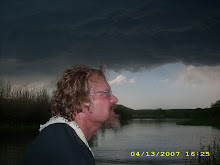
“Nothing quite like a field of Blue Bonnets against the white hide of a Brahma,” a Texas Representative was said to say during the 1901 debates of what bloom should be the state’s flower.
Representative Phillip Clements of Goldthwaite suggested instead the cotton boll, calling it the “white rose of commerce.”
Rep John Nance Garner of Uvalde begged to differ suggesting the prickly pear cactus bloom was far more beautiful and the plant itself symbolic of the rugged state. Although Cactus Jack went on to be Vice-President of the United States he lost this debate.
The Texas Bluebonnet actually comes in five species of the genus Lupinus. The Big Bend Bluebonnet, Lupinus Havardi which bloom in spring throughout the Trans Pecos, have violet flowers with a yellow stamen.
The Lupinus Subcarnosus also known as buffalo clover, was the official species selected by the House of Representatives in 1901 for the state’s flower. These smaller flowers are deep blue, but occasional random genetic mutation color them white. The flowers have a central greenish-yellow center that, with age, turns red. This species grows in the southern and eastern parts of Texas near the Gulf of Mexico.
In 1971 all five lupus varieties in Texas were deemed official.
Lupinus, which is a Latin word meaning wolf, was perhaps chosen by Swedish taxonomer Carolus Linnaeus, because bluebonnets or lupins were thought to devour the soil. In fact they enrich it.
Bluebonnets are part of the legume family which includes mesquite, clover, alfalfa, beans, and peanuts. All legumes are nitrogen fixers, meaning these plants are able to take nitrogen out of the atmosphere and convert it to a nitrogen form usable by the plant. Through a symbiotic relationship between the plants roots and microorganisms known as rhizobia, atmospheric nitrogen is converted to ammonia compounds that help the plant grow and compete with other plants. In return, in a form of classic mutualism, the plant supplies the bacteria with carbohydrates, proteins, and sufficient oxygen so as not to interfere with the fixation process. This is known as diaztrophy and occurs inside nodules growing on the roots.
Lady Bird Johnson convinced the state of Texas to seed wildflowers including bluebonnets across the state’s highways. It is legal to pick the state flower, but watch how you park.

No comments:
Post a Comment